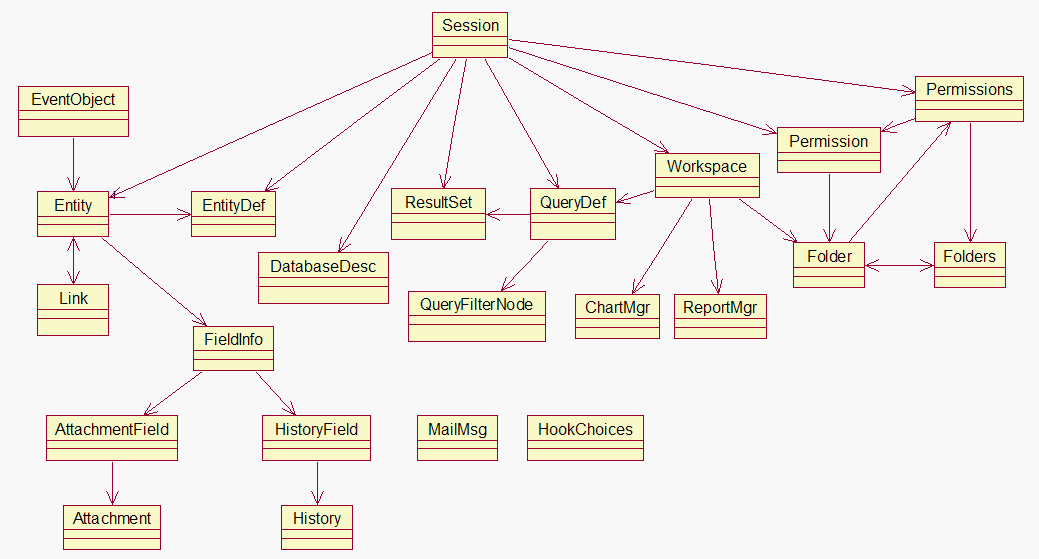User database objects
User database objects are the objects your code works with the most, from a given Session.
The following diagram illustrates the types of objects you use to access a user database and the relationships between them. The arrows indicate the direction in which you acquire related objects. For example, from the Session object, you can acquire different types of objects such as DatabaseDesc, Entity, EntityDef, QueryDef, and ResultSet directly.

In some cases, objects have an indirect relationship. For example, the QueryDef and ResultSet objects work together to run a query, but you create these objects separately using methods of the Session object. The ResultSet object uses information from the QueryDef object to perform the query.
- User database object
- Description
- Session Object
- Access the user database; build a new record
- Entity Object
- An object corresponding to a database record. Work with Record data: set field values, validate, commit, revert.
- EntityDef Object
- View read-only meta-data: actions, fields, hooks, states, and transitions applicable to a given record type
- EntityDefs Object
- Collection of EntityDef (record type) objects
- QueryDef Object
- Defines the query criteria. A QueryDef is the definition of a query.
- ResultSet Object
- Contains the data the query fetches. A ResultSet is the result when you Executea QueryDef. If the query is a parameterized query, then the ResultSet is used to fill in values for the queries.
- QueryFilterNode Object
- Implements comparison filters for the query
- Workspace Object
- The Workspace (WorkSpaceMgr for Perl) object provides an interface for manipulating saved queries, reports, and charts in the Public and Personal Queries folders.